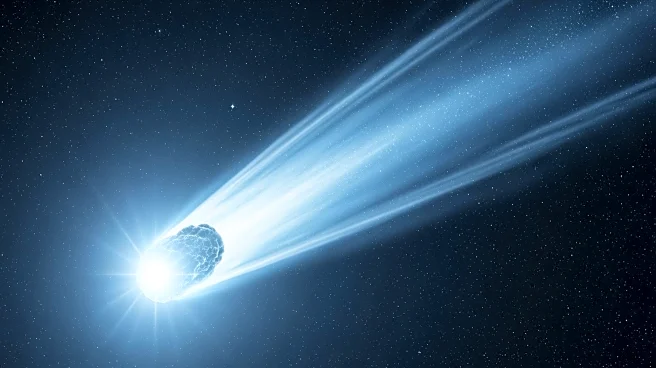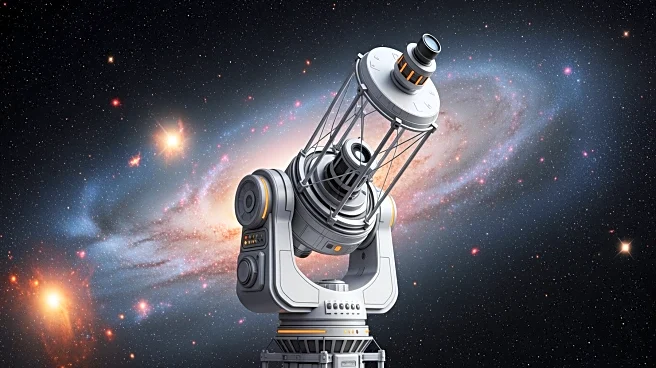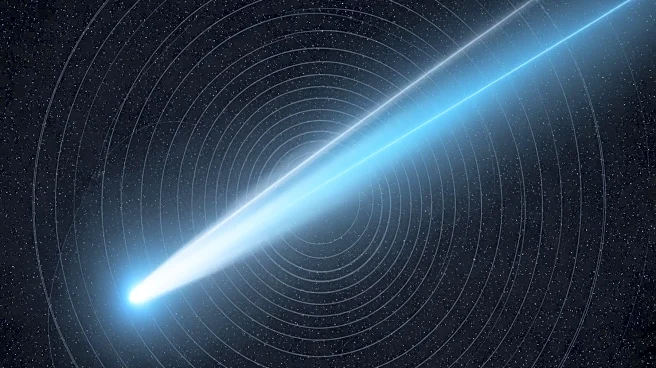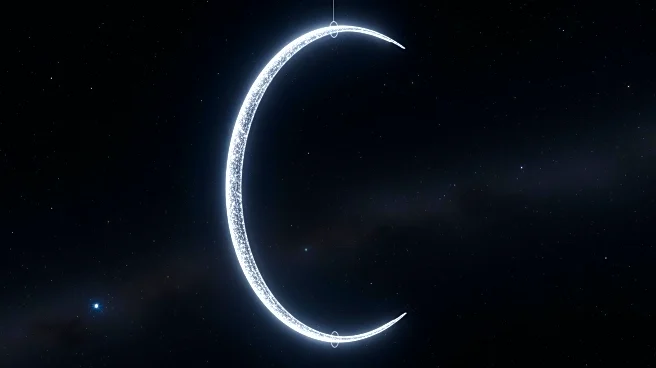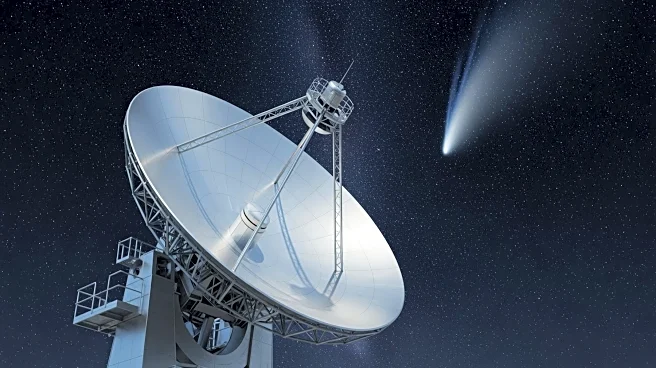What's Happening?
The James Webb Space Telescope has issued the first weather report for the exoplanet-like object SIMP 0136, which is a rogue planet roaming the Milky Way without a star. The telescope detected auroras
warming the upper atmosphere, creating a blanket of sand-like clouds. The object spins rapidly, completing a rotation every 2.4 hours, allowing scientists to track weather changes using temperature, cloud, and chemistry maps. The study, led by Dr. Evert Nasedkin from Trinity College Dublin, reveals a thermal inversion in the stratosphere, with temperatures rising higher up rather than falling.
Why It's Important?
This discovery is significant as it provides insights into the atmospheric dynamics of rogue planets, which do not orbit stars. Understanding these weather patterns can help scientists learn more about the formation and evolution of such objects. The findings also demonstrate the capabilities of the Webb Telescope in studying atmospheric conditions beyond our solar system. This research could pave the way for future studies on habitable planets and contribute to the search for extraterrestrial life.
What's Next?
Future research will likely focus on mapping similar objects in finer detail using larger ground-based telescopes. Scientists may also explore ion-driven glow to confirm auroras outright. The techniques developed in this study could be applied to smaller, cooler targets in the search for habitable planets. The study of SIMP 0136 shows that even without a star, a planet can have a dynamic weather system powered by its own heat and magnetism.
Beyond the Headlines
The study of rogue planets like SIMP 0136 challenges traditional notions of planetary systems and their dependence on stars. It highlights the complexity of atmospheric physics and the potential for diverse weather systems in the universe. Ethical considerations may arise regarding the exploration of such objects and the implications for understanding life beyond Earth.



